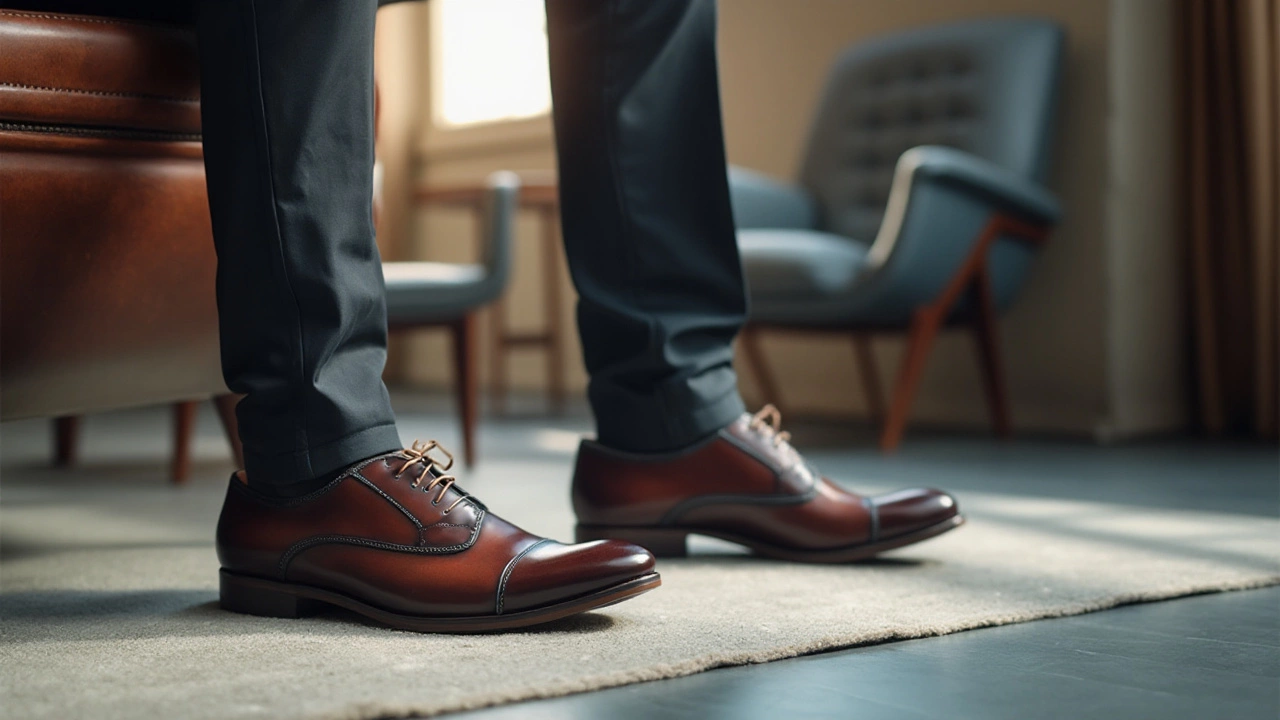Best Work Footwear: How to Choose Shoes That Keep You Comfortable All Day
If you spend hours on your feet, the right shoes can make the difference between feeling fine and feeling sore. You don’t need a pricey brand to get good support – you just need the right features. In this guide we’ll break down what to look for, why it matters, and which types of shoes work best for different jobs.
Key Features Every Pair of Work Shoes Should Have
First, check the sole. A thick, rubber sole with good tread absorbs shock and stops slips. Look for a cushioned midsole – memory foam or EVA are common choices – because they spread the impact of each step.
Second, think about support. A firm heel counter keeps your foot stable, while a padded arch prevents foot fatigue. If you have flat feet or high arches, a shoe with built‑in arch support or a removable insole is a win.
Finally, breathability matters. Mesh panels or perforated leather let air flow, so your feet stay dry and cool. A water‑resistant upper is a plus if your job involves wet conditions.
Best Types of Work Shoes for Different Jobs
For warehouse or construction work, steel‑toe boots with a slip‑resistant outsole are often required. Look for models that meet ASTM safety standards and still have a cushioned footbed.
If you’re in a retail or office setting, a lightweight sneaker or slip‑on shoe can give you support without the bulk of a boot. Brands that focus on ergonomic design usually offer memory‑foam insoles and flexible uppers.
Healthcare professionals need shoes that are easy to clean and have extra heel support. Many medical‑grade shoes have a smooth, non‑marking sole and a breathable, antimicrobial lining.
For outdoor maintenance or landscaping, hiking‑style work shoes with a rugged tread and waterproof membrane protect your feet from mud and rain while still offering cushioning.
When you’ve narrowed down the style, try them on at the end of the day. Your feet are more swollen then, so the fit will be realistic. Make sure there’s a thumb’s width of space in front of your toes and that the heel doesn’t lift when you walk.
Don’t forget to replace your work shoes regularly. Even the best cushioning breaks down after 6‑12 months of heavy use. If you notice creaking, uneven wear, or increased foot pain, it’s time for a new pair.
Bottom line: the best work footwear combines shock‑absorbing soles, solid arch and heel support, breathable materials, and the right safety features for your job. Follow these tips, and you’ll stay comfortable, safe, and ready for anything the workday throws at you.
-
Discover the Most Comfortable Work Shoe Brands
Finding the perfect work shoe is crucial for comfort and mobility during long hours. This article explores various shoe brands known for their superior comfort and support in work settings. Each brand offers unique designs aimed at professionals who prioritize foot health and comfort. With insights, facts, and tips, readers will learn about what makes a shoe comfortable and how to choose the right pair for their needs.
